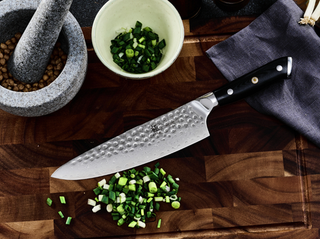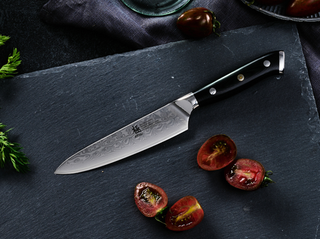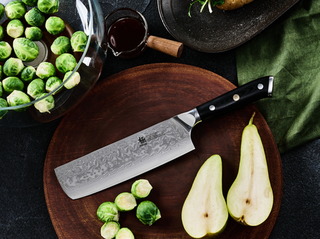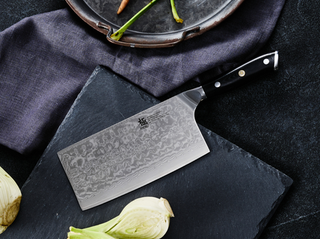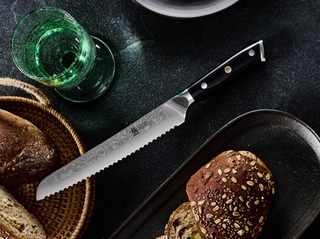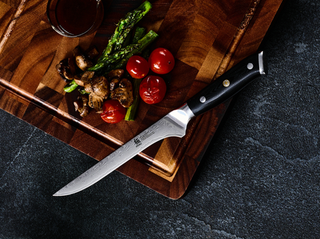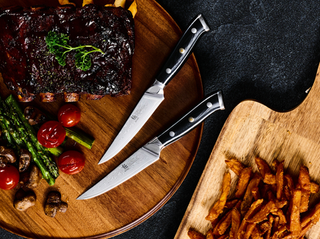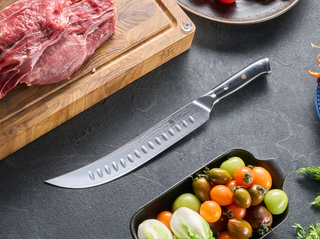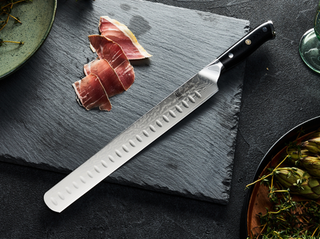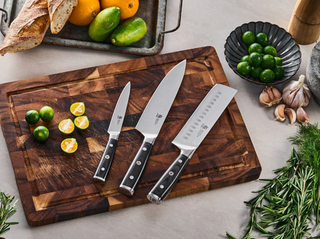THE ART OF CUTTING CUCUMBERS FOR PERFECT PICKLES
Whether you enjoy them as a snack, a sandwich topper, or a side dish, the key to a great pickle starts with the cucumber and the way you cut it. Knowing how to cut the cucumber is crucial because it directly influences the texture, flavor absorption, and overall appeal of your pickles. So, let's explore the different methods of cutting cucumbers to achieve the perfect pickle.

UNDERSTANDING THE BASICS: WHY CUTTING MATTERS
Cucumbers are the foundation of most pickles, and how you prepare them can make or break your pickling efforts. The thickness, size, and shape of your cucumber slices have to be perfect for them to quickly absorb the brine, retain their crunch, and still look delectable on your plate.
So, before you start dicing, make sure you choose the right cucumbers. Most people agree that Pickling cucumbers, often called Kirby cucumbers, are ideal due to their smaller size, thin skin, and firm flesh. However, regular cucumbers can also be a good option, especially if you prefer a larger, softer pickle.
Now, let’s delve into the various cutting techniques and how they impact your pickles.
SPEARS: PERFECT FOR SNACKING AND SANDWICHES
If you enjoy pickles as a snack or as a crunchy addition to sandwiches, spears are the way to go. Cutting the cucumber into spears allows the brine to penetrate quickly and evenly, ensuring that each bite is flavorful. Spears are also really easy to handle and comfortable to munch on.
HOW TO CUT SPEARS
To make spears, cut the cucumber lengthwise into quarters or eighths with a high-quality knife, depending on its size and whether you like bigger or smaller slices.
Pro Tip: If you want your spears to be neat and uniform, start by cutting off both ends of the cucumber. Then, slice the cucumber in half lengthwise. Then, cut each half into quarters. If you prefer thinner spears, you can slice each quarter again.
Best uses for Spears: Dill pickles, garlic pickles, or kosher pickles.
SLICES (ROUNDS): VERSATILE AND QUICK-PICKLING

Slices, also known as rounds, are loved because they are incredibly versatile. They can be used to make bread and butter pickles or sweet pickles. Moreover, they are ideal for quick prickling because the thin slices allow the brine to infuse rapidly. With slices, your pickles are ready to eat in a short time.
HOW TO CUT SLICES
Method: Place the cucumber horizontally on a chopping board. Then, carefully cut into thin, round slices. The ideal size would be about 1/4 inch thick.
Pro Tip: If you want to add a decorative touch to your pickles, consider using a crinkle cutter for wavy slices. These crinkled rounds not only look appealing but also have a slightly different texture, adding to the sensory experience.
Best For Slices: Bread and butter pickles, sweet pickles, and pickle chips.
HALVES: A BOLD, CRUNCHY OPTION
Halves are a great option if you prefer a pickle with a hearty crunch. When you cut the cucumber in half, you expose more surface area to the brine while still retaining a good amount of its original firmness. With this method, you get larger cucumbers that might be too bulky to pickle whole.
Method: Slice the cucumber in half lengthwise.
Pro Tip: To ensure even pickling, make sure the halves are similar in size. You can trim any uneven edges before pickling.
Best For: Larger cucumbers for dill pickles.
CRINKLE CUT: ADDING TEXTURE AND APPEAL
If you want prickles that are not just visually appealing, but also aesthetically pleasing, then the crinkle-cut is the way to go. The ridges created by the crinkle cutter allow the brine to cling to the cucumber slices, and the result is a pickle that is both flavorful and fun to eat.
HOW TO CUT CRINCKE-CUT
Use a crinkle cutter to slice cucumbers into crinkled rounds.
Pro Tip: When using a crinkle cutter, apply consistent pressure to ensure that the ridges are uniform. This will result in a more professional-looking pickle.
Best For: Adds a decorative touch to bread and butter pickles.
CHUNKS: IDEAL FOR RELISH AND SNACKING
Cutting cucumbers into chunks works well for both sweet and dill pickles. Chunks are great for relish or for snacking on their own. The larger pieces provide a satisfying crunch and allow for a more substantial bite of pickle, making them a popular choice for those who enjoy a heartier snack.

HOW TO CUT CHUNKS
Cut the cucumber into thick rounds or chunks.
Pro Tip: When cutting cucumbers into chunks, aim for uniform sizes to ensure they pickle evenly. This will also make your pickles look more attractive in the jar.
Best For: Sweet or dill pickles, good for snacking.
THIN STRIPS: FOR A DELICATE PICKLE RELISH
Thin strips are perfect for making pickle relish or other finely chopped pickled condiments. The thin, delicate strips allow for a quick infusion of flavor and are easy to chop into smaller pieces. This method is ideal for those who enjoy a pickle that can be spread on sandwiches or mixed into salads.
Method: Use a mandoline or knife to slice cucumbers into thin, long strips.
Best For: Pickle relish.
Pro Tip: If you don’t have a mandoline, you can achieve similar results with a sharp knife and a steady hand. Be careful to slice the cucumber evenly to avoid any overly thick or thin pieces.
ADDITIONAL TIPS FOR PERFECT PICKLES
- Remove the Blossom End: Always cut off the blossom end of the cucumber (the opposite end of the stem) before pickling. The blossom end contains enzymes that can soften the pickles, leading to a less desirable texture.

- Consistency is Key: No matter how you cut your cucumbers, aim for uniformity. Evenly sized pieces will pickle at the same rate, ensuring a consistent flavor and crunch throughout your batch.
- Experiment with Sizes: Don’t be afraid to experiment with different sizes and shapes to find the pickle that suits your taste. Some people prefer thinner slices for a delicate crunch, while others enjoy thicker cuts for a more substantial bite.
- Use Fresh Cucumbers: For the best results, use fresh, firm cucumbers. The fresher the cucumber, the crisper the pickle. Avoid using cucumbers that are soft or have blemishes.
Whether you prefer whole pickles, spears, slices, or something more creative like crinkle cuts, each method offers a unique texture and flavor profile. So, grab your cucumbers, sharpen your knives, and start experimenting with different cuts. With a bit of practice, you’ll be well on your way to creating homemade pickles that are not only delicious but also tailored to your taste!
